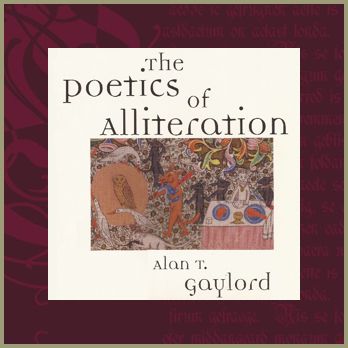

The Miller’s Tale
The Miller's answer to the love triangle in the Knight's Tale that immediately precedes, we soon see what is different about the characters in a romance and a fabliau. Perhaps the most thorough poetic justice shown in any of Chaucer's fabliaux.

The Monk’s Tale
The Monk's series of 17 of the promised 100 examples of the fall of great men and women (de casibus tragedies) is finally interrupted by the Knight, who wants to hear stories of those who have fallen whose Fortune improves.

The Nun’s Priest’s Tale
Seemingly a beast fable about a cock, a hen, and a fox, this tale proves to make fun mostly of human foibles. There are frequent mock-heroic "drops" in tone when we are reminded that we are mostly listening to a book-reading rooster and a tempting fox who is also a reader of texts.

The Old High German and Middle High German Hildebrandslied
Recorded in Austria in 2006, the OHG and MHG versions of the Hildebrandslied are performed before a live audience by that gift to medieval music performance in Medieval German, Eberhard Kummer.

The Pardoner’s Tale
The Pardoner's moving exemplum or sermon story to illustrate that the root of all evil is avarice. The irony is that the Pardoner himself is avaricious, as his long prologue reveals, though he hopes to save other from his own deadly sin.

The Parson's Tale
This is the last tale and Chaucer's Retraction of all of his tales that "sounen unto synne."

The Physician's Tale: Two Readings
One of Chaucer's more troubling tales to a modern audience, this short tale is read by Professor Tom Burton and Kathryn Dineen in two complete versions: one by a male voice; another by a female voice

The Poetics of Alliteration
Recording of all the alliterative poetic passages Alan Gaylord discussed in his expansion of a plenary address given at a SEMA annual conference in 1998. Range from Old English to Modern English examples.

The Poetics of Alliteration
The CD has Alan Gaylord's readings of the various texts he chose for examples of alliteration, ancient and modern, in his plenary address at a SEMA conference.The monograph accompanying the CD is an expansion of that plenary address.

The Poetics of Alliteration
The monograph is an expansion of a plenary address that Alan T. Gaylord read at a SEMA annual conference in 1998. The book covers alliterative poetry from the Old English poetic canon right down to modern examples.

The Prioress’s Tale:Two Readings
Though this tale is a miracle of the Virgin by genre, many readers may wonder whether by including it in his collection of tales if Chaucer was giving vent to anti-semitism? Is the Prioress revealed as flawed by the tale, or is the Virgin Mary glorified?

The Reeve's Tale
The tale of two Northern lads who, in trying to protect the wheat grown to feed fellow students at their hall in Cambridge University, get entangled with a miller and his family.

The Second Nun’s Tale
The Nun accompanying the Prioress tells this tale of St. Catherine: one of the legends or lives of the saints stories included in Chaucer's selection of most of the genres of narrative available in his day.

The Second Shepherds’ Play: A Live Reading at Kalamazoo
This medieval mystery play depicts a mock nativity presided over by the sheep thief Mak with his wife Gill as his accomplice. Oddly enough, the Nativity of Christ follows before the witnessing winter-cold shepherds of West Yorkshire.

The Shipman’s Tale
A tale that may have been meant for the Wife of Bath originally, the Shipman's fabliau satirizes a Parisian merchant who is not paying his wife enough attention, making her an easy target for the merchant's good friend, the monk Don John.